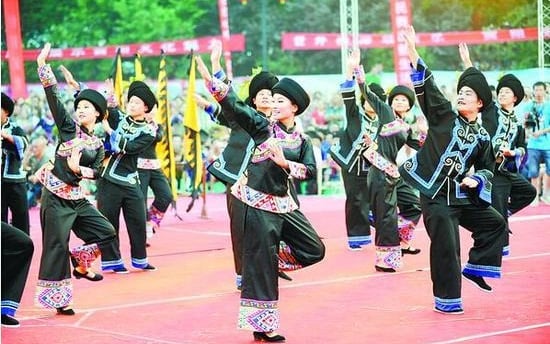摆手舞; Tuija Traditional "Hand-Waving" Dance
Find out more about the Tujia traditional "Hand-Waving" Dance!
7/10/20242 min read


Photo credit: 新浪文化
The Hand-Waving Dance, known in the Tujia language as "Sheba" or "Sheba Gichi," translates to "Dance to worship the gods." It is a ritual dance that has been passed down among the Tuis of the You River basin in the border regions of Hubei, Hunan, Chongqing, and Guizhou. The hand-waving dance is a widely prevalent cultural activity among the Tujia communities in the Enshi region, popular along the You River basin. In the past, every village with a hundred households would construct a Hand-Waving Hall, and some also built galleries and stages to perform this dance.
In Lai Feng County, places like She Mi Hu and Da He still preserve the remnants of Hand-Waving Halls. The narrative in "Huguang Gazette'' about the Hand-Waving Dance and Pu She Tree from the Five Dynasties vividly depicts Tujia people dancing around the Pu She Tree over a thousand years ago, marking the earliest historical record of this dance in Lai Feng's Tujia community. A damaged stele in the Hand-Waving Hall near She Mi Hu village has an inscription stating "Born as a hero, die as a spirit," which serves as the best annotation for the Tujia people's practice of honoring ancestors through the hand-waving dance.
The Hand-Waving Dance performed in She Mi Hu village retains traditional characteristics and is well-preserved. Men and women gather in front of the hall on an earthen dam to dance, drumming and waving their hands. Characterized by swinging the hand and walking with the foot on the same side of the body, the dance incorporates body bending and knee flexing, using body twists to drive the swinging of the hands. The performance largely portrays aspects of hunting, farming, military, and social life, integrating singing, music, and dance seamlessly, complemented by gongs, drums, and interspersed with hand-waving songs.
The distinguishing feature of the Hand-Waving Dance from other dances is the coordination of the same hand and foot, the dance movements being robust and graceful, and the posture flowing smoothly and stably. Main hand-waving actions include "single wave," "double wave," and "rotational wave," with key movements involving turning smoothly, bending knees, trembling, and dipping down.
The Hand-Waving Dance is a spiritual treasure passed down through generations of the Tujia people, having a significant impact among the people in the border region of Hubei, Hunan, Chongqing, and Guizhou, serving multifarious social functions such as rituals, entertainment, education, and social interaction.
